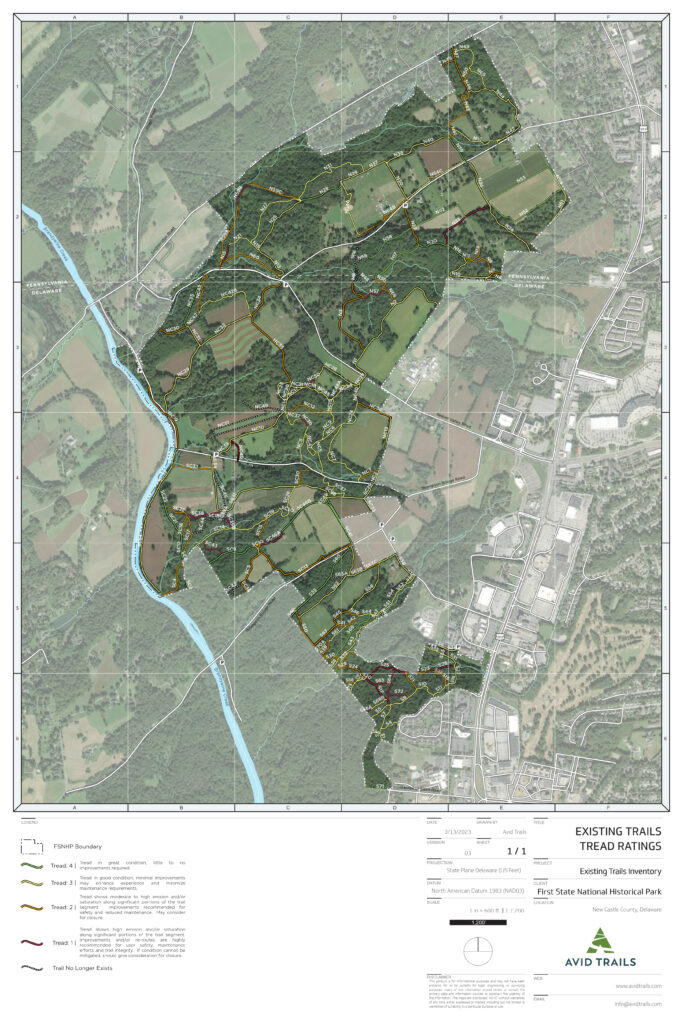First State National Historic Park is Delaware’s first national park, designated under the Antiquities Act by President Barack Obama in 2013. The park includes six individual sites spread throughout the state of Delaware: New Castle Court House, Green, and Sheriff’s House, Dover Green, Fort Christina, Old Swedes’ Church, John Dickinson Plantation, and the Brandywine Valley. Our project site, the Brandywine Valley, is perhaps the NPS’s most unique park, including more than 1,300 acres of rolling agricultural fields, pastures, forested hills, and streams. Our team helped the National Park Service inventory and map all the existing trails on site – nearly 30 miles!
Now, we’re challenged with shaping the park’s future. This includes developing and implementing a long-range strategy and comprehensive trails plan for the park that will: accommodate diverse user groups including hikers, equestrians, and cyclists; highlight cultural and natural resources; provide trailhead access in key areas; recommend removal or restoration of visitor-created trails and unsustainable trail routes; and consider trail reroutes and new trails where appropriate. The trails plan is expected to be adopted in 2024.
The trails inventory scope included quanitatively assessing the quality of all trails within the park. This included both system trails, and rouge “non-system” trails that have been created by trail users. This analysis would be used to help park staff understand the existing condition of trails on site, and was used as the antecedent to a trails master plan for the entire site. The Avid Team is currently working on the trails master plan.
The half rule says that the trail grade should be no more than half the sideslope grade. This rule is critical when assessment, designing and constructing trails on sideslopes. For example, if you’re working on a hill with a 6- percent sideslope, your trail grade should be no more than 3 percent. If the trail is any steeper, it will be a fallline trail which leads to water running along the tread causing erosion, ruts and downstream sedimentation. *Note: The half-rule determines a maximum running grade for trail tread, but does not supersede sustainable, user appropriate grades when working on a steeper sideslope. E.g. on a 20% sideslope a 10% grade may still be too steep, fast and erodible for heavy bicycle traffic.






